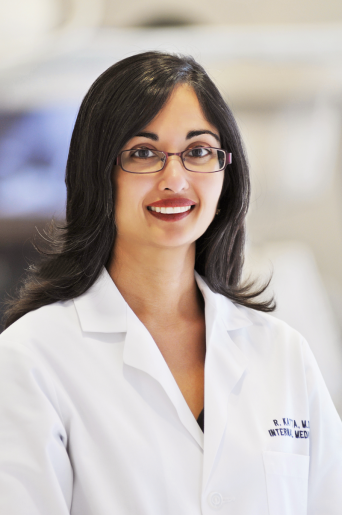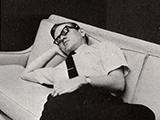Growing Up Baylor: Dr. Rajani Katta
Imagine studying, training and eventually working at the same institution during the span of your career. A special group of physicians, faculty members, researchers and staff at Baylor College of Medicine have had this unique experience.
Dr. Rajani Katta, a dermatologist and clinical assistant professor at Baylor, tells us how training and working at Baylor has impacted her life and career.

Q: Did you always know you wanted to study medicine?
A: I don’t actually remember when I decided to be a doctor: I just remember always wanting to be a doctor. Volunteering at a hospital in high school and getting my emergency medical technician training in college helped solidify my decision.
Q: Where and when did your journey with Baylor College of Medicine start?
A: I grew up in Pittsburgh, and even as a high school student I remember hearing about the advances coming out of Baylor. It had such a great reputation, and when I learned more about it in college, it became my top choice of medical schools. I began medical school here in 1990, and 30 years later I’m still honored to be a part of the great work that Baylor is doing.
Q: How did you decide on your specialty?
A: I was fascinated by multiple specialties when I was rotating through different fields at Baylor. When I was working in my pediatric dermatology elective, I decided on dermatology. I worked with some fantastic attendings who employed the latest medical advances along with a compassionate approach to their young patients.
Severe skin disease can impact almost every aspect of a child’s life, from sleep to classroom learning to self-esteem, and my role models were able to change lives and really connect with their young patients. This inspired me to not only go into dermatology, but to make effective, empathetic communication and patient education the core of my practice.
Q: What inspired you to continue studying at Baylor?
A: To become a dermatologist, you must first spend one year in another field to establish a foundation before you specialize. I chose to train in the Baylor Internal Medicine program for my one-year internship because I wanted the strongest foundation possible. I rotated at Methodist Hospital, CHI St. Luke’s Hospital, the Michael E. DeBakey VA Medical Center, and Ben Taub Hospital. This range of patient care experiences was so important in my later training and career.
Q: What is the most valuable lesson you’ve learned?
A: You can learn so much from every single person you meet. I learned this lesson when I was a medical student at Baylor. I learned so much not only from my attendings, but also from the unit clerks in the hospital wards, the experienced nurses in the ER, and the highly competent scrub nurses in the OR.
Now, in my clinic, my patients teach me so much on a daily basis, and in my work as an educator I continue to learn from our medical students and dermatology residents.
Q: Knowing what you know now, what would you tell your younger self?
A: The medical field will change in ways that you can’t even imagine now. The most important thing you will learn in medical school is not the facts: it’s your curiosity and the ability to keep asking and learning. I did not have email when I started med school, and now I’ve created patient education websites.
Q: What do you think makes Baylor unique?
A: Baylor College of Medicine is making an impact in so many areas. It is unique because it’s not only providing world-class patient care. The people who make up Baylor are making an impact in research, in the education of future physicians, in reaching young students across the community, in reaching underserved populations across the region and worldwide, in educating the public on evidence-based medicine, and in multiple other arenas.
Q: How has sticking with Baylor programs and ultimately becoming a faculty member impacted your life and career?
A: Working with medical students, other Baylor faculty, and with faculty across the country has enabled me to work on research projects, medical journal articles, patient education initiatives, and patient advocacy efforts. I’ve been able to publish in medical journals, write books for the general public, and to speak on important preventive dermatology topics to many media outlets because of these valuable experiences and collaborations.
Q: Do you have a mantra?
A: My mantra when I’m working on new projects or initiatives is: Everything is hard before it’s easy. It’s human nature to hope that a new subject or skill will just come naturally, but it’s usually very challenging. I frequently wish I could skip some of the hard work that comes before you’re an expert, but there’s just no way around it. It applied when I was in medical school, and it’s just as applicable now as I learn my way around new digital technologies.
Additional Resources
Read more from the Growing Up Baylor series.
Learn more about the Department of Dermatology at Baylor.



